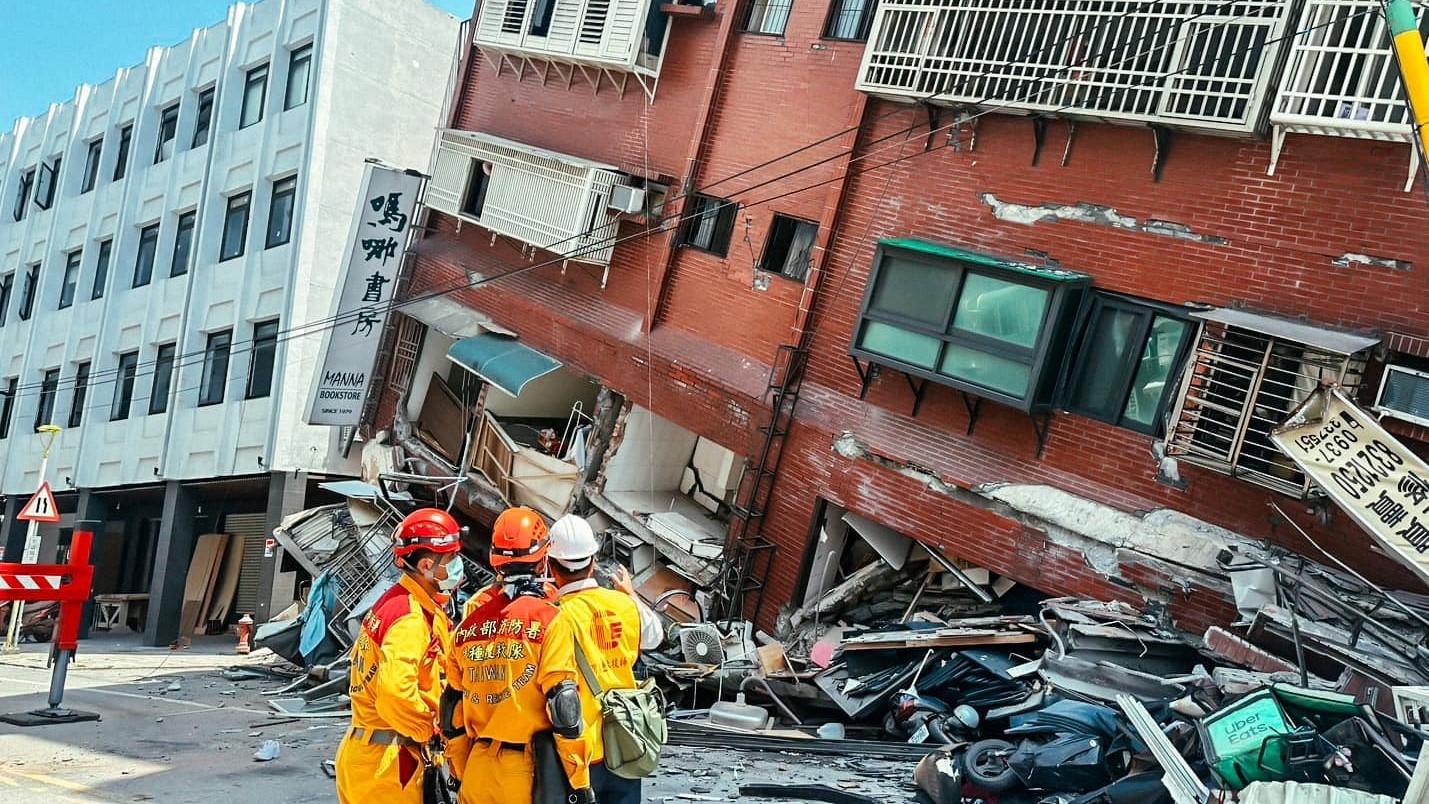Taiwan earthquake: 9 dead and dozens trapped after strongest quake in 25 years
The earthquake, which struck on Wednesday morning, has killed nine people, injured more than 900 and left dozens trapped in underground tunnels.

At least nine people have been killed and more than 900 injured after an earthquake hit the east coast of Taiwan on Wednesday morning.
The powerful quake, Taiwan's strongest in 25 years, collapsed buildings, knocked out power and triggered landslides, while also prompting tsunami warnings in southern Japan and the Philippines. Taiwanese officials reported the quake as having a magnitude of 7.2, while the U.S. Geological Survey (USGS) seismometers logged a magnitude of 7.4.
The quake struck southwest of Hualien City at 7:58 a.m. local time and was followed by a swarm of powerful aftershocks that sent tremors across the island. The earthquake occurred 21 miles (35 kilometers) below the surface, according to the USGS, and has left 77 people trapped in tunnels and beneath collapsed buildings, according to Taiwanese officials.
"Disaster response is underway," Tsai Ing-wen, Taiwan's president, wrote on X, formerly known as Twitter, this morning.
Despite the strength of the quake, its toll on Taiwan was relatively modest. This is because the island's buildings are constructed to withstand strong earthquakes and its population is well-drilled for when they hit.
Related: Nearly 75% of the US is at risk from damaging earthquakes, new map reveals
Taiwan's frequent temblors are a consequence of its location along the Pacific Ocean's "Ring of Fire," a 25,000-mile (40,000 kilometers) arc where the Pacific plate meets with others such as the Eurasian, North American, Cocos, Philippine Sea and Nazca plates.
Sign up for the Live Science daily newsletter now
Get the world’s most fascinating discoveries delivered straight to your inbox.
The friction between these plates as they slide past and dive beneath each other can store energy, which is suddenly released in the form of quake-spawning ruptures.
In Taiwan, the interaction between the Philippine Sea plate and the Eurasian plate generates ruptures called reverse faults that lift one plate above the other.
Around 2,000 earthquakes of magnitude 4.0 or greater have rocked the island since 1980. The deadliest, the magnitude 7.7 Chi-Chi earthquake that struck on Sept. 21, 1999, killed 2,415 people, injured 11,305 and caused $300 billion in damages.

Ben Turner is a U.K. based staff writer at Live Science. He covers physics and astronomy, among other topics like tech and climate change. He graduated from University College London with a degree in particle physics before training as a journalist. When he's not writing, Ben enjoys reading literature, playing the guitar and embarrassing himself with chess.










